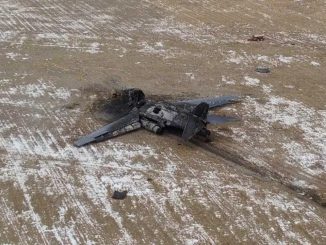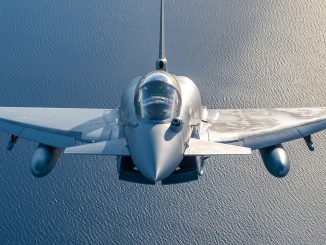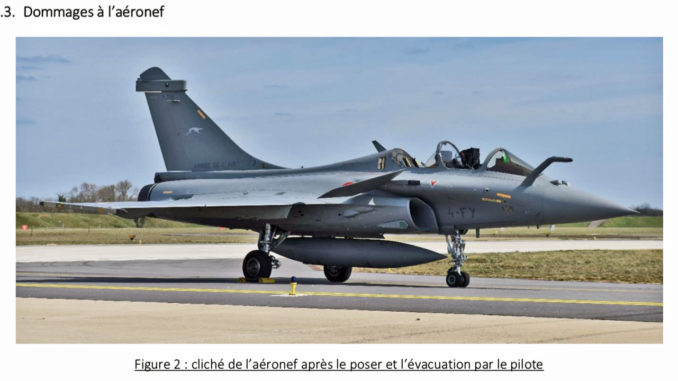
Civilian Passenger on Incentive Flight Accidentally Ejected Himself, Report Says.
You may recall an unusual incident from Mar. 20, 2019, when a civilian passenger riding in a two-seat Armée de l’Air Dassault Rafale ejected from the aircraft while the pilot flying remained at the controls, despite his canopy being jettisoned, and managed to make an emergency landing. The report from the incident has just been released by French officials, and it makes for bizarre reading.
The incident took place near the Saint-Dizier 113 airbase in eastern France, where the flight originated from.
According to the accident investigation findings by the French Investigation Bureau for State Aviation Safety (BEA-E), and a summary of that report published on aerotime.aero by reporter Clement Charpentreau (h/t to Aviation Week‘s Steve Trimble who posted the link on Twitter), the flight began as a civilian “incentive” flight granted to non-military passengers who may have a supporting role in aircraft operations and for journalists in the aviation industry (by the way, make sure you read this article published by our Editor David Cenciotti about flying as a journalist in the backseat of a fighter jet).
The report identified the passenger as, “A 64-year-old employee of a French defense manufacturer,” Who, according to the report, “was offered a discovery flight on a Dassault Rafale B fighter jet as a surprise by four of his colleagues, including a former pilot of the French Air Force that organized the gift.”
The sequence of factors that contributed to the accident accumulated almost immediately from the start. They included skipping some required medical checks for a high-performance tactical jet passenger. The passenger who fired his ejection seat was cleared for the flight only four hours prior, and only under the condition that he not be subjected to negative G’s during the flight. The medical examination also limited the G factor to +3 for this passenger, but the doctor failed to communicate with the pilot, who proceeded to an usual take off at more than 4G, then 0.6G negative.
Part of the report indicated that the passenger may have only accepted the aircraft ride under pressure from peers who arranged the surprise flight. Upon entering the aircraft, the passenger’s heart rate was, “recorded between 136 and 142 beats per minute.” And that, “The investigation found that the safety checks of the passenger had been approximate at best.”
During the critical adjustment of the retention harness for the Martin-Baker MK16 ejection seat in the back seat of the Rafale, the passenger was not cross-checked by ground crew and had not tightened the harness adequately on his own. He had also not donned his G-suit pants correctly and his helmet and oxygen mask were unbuckled. From here, the incident unwound rapidly once the flight began.
According the original French language report translated to English, “Following orders of a regular training mission that involved two other Rafales, the pilot took off and climbed at 47°, generating a load factor of around +4G. Then, as he leveled off, he subjected his passenger to a negative load factor of about -0.6G.” This is where problems from the harness not being tight enough contributed to the accident sequence.”
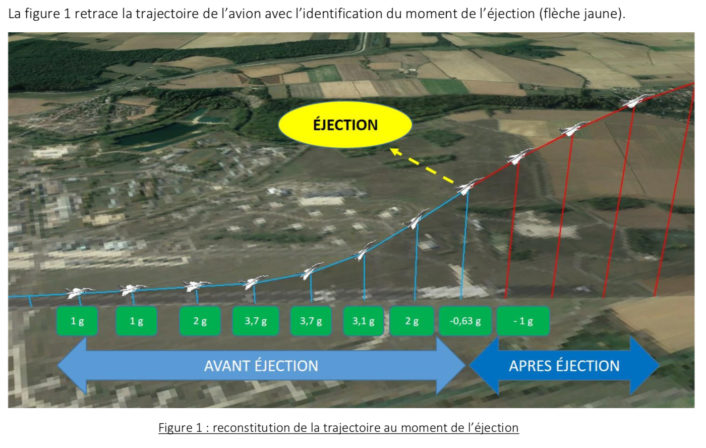
The translated report went on to reveal, “Discovering the feeling of the negative load factor, the insufficiently strapped and totally surprised passenger held onto the ejector handle and activated it unintentionally.”
The report then said, “During the ejection, the civilian lost his helmet and oxygen mask. Due to a technical flaw of the seat, the dinghy failed to inflate, but fortunately, the incident happened above land. The passenger sustained minor injuries.”
Ironically (more or less), it was a technical malfunction that prevented the pilot from also being ejected from the aircraft along with the rear-seat passenger. The normal ejection sequence for a Dassault Rafale two-seat aircraft would cause both crew members to be ejected even if only one initiates the ejection sequence. This means the rear seat passenger accidentally pulling the ejection seat handle between their legs should have ejected the pilot as well. In this bizarre incident, both the front and rear canopies were disintegrated and ejected by explosive charge, the rear seat left the aircraft, but the pilot’s seat remained inside the aircraft. In other words, a technical glitch saved the aircraft.
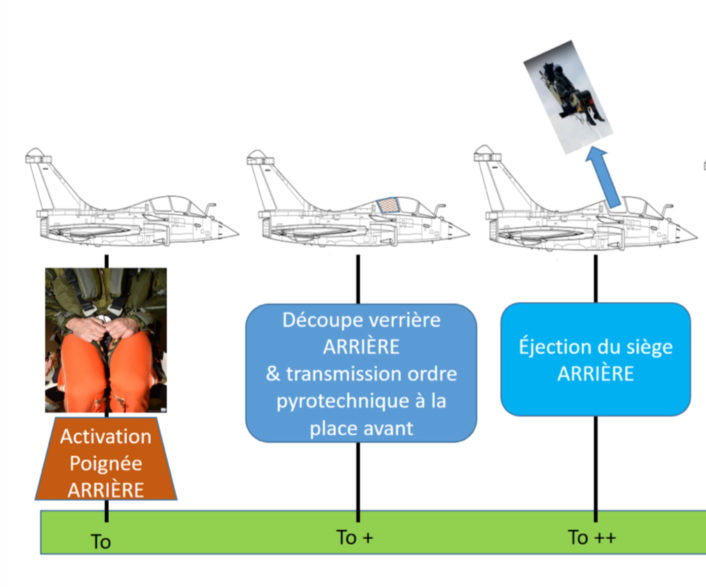
The pilot of the Dassault Rafale managed to maintain control authority of the aircraft despite both canopies being gone, dump fuel and make an emergency landing. He immediately left the aircraft as quickly as possible since his ejection seat was fully armed and the ejection sequence should have already occurred.
The reason for the failure of the pilot’s ejection seat in the escape sequence was reported as, “The explosion [from the initial rear seat ejection] ruptured the casing of the sequence selector supposed to trigger the pilot ejection seat.”
A number of recommendations for passenger flight operations were made based on the findings of the accident investigation. These included allowing an adequate interval between medical checks for the flight and the flight itself and the completion of the checks to make sure the passenger-candidate is mentally and physiologically prepared for high performance flight in tactical aircraft.
This is shocking. I’ve flown as a pax in fighters many times. No matter my backseat experience, I’ve always received detailed briefings, done a cockpit survey, ingress and egress dry runs, and I’ve always been supported by multiple ground crews while strapping into the cockpit.
— David Cenciotti (@cencio4) April 9, 2020
After the findings of the official French report, and the unusual list of factors that contributed to this bizarre accident, it may be reasonable to assume that anyone taking a media or VIP flight in French tactical aircraft in the future will likely be subjected to a more rigorous procedural regimen, as normally done in the rest of the world.

